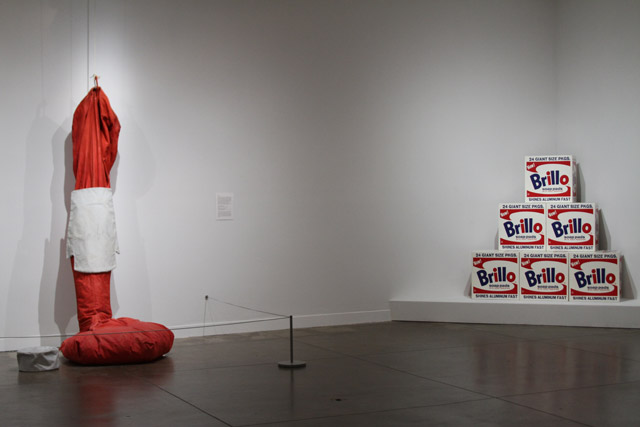
PASADENA’S ORIGINAL MODERN ART CONNECTION: The Pasadena Art Museum, a crucial institutional player in the formation of Southern California’s contemporary art scene, is now the Norton Simon Museum of Art and has been since October 1974, when the organization reached one of several crossroads since its story began in 1922, when it was known as the Pasadena Art Institute. 46 N. Los Robles: A History of the Pasadena Art Museum revisits what many consider the most exciting period in the history of the organization, when director Thomas Leavitt and curator Walter Hopps were showing young California artists alongside the best of New York and Europe, including the first major retrospective for the massively influential Marcel Duchamp in 1963. Leavitt went on to become director of the Santa Barbara Museum of Art, and Pasadena to Santa Barbara: A Selected History of Art in Southern California, 1951-1969, which opens at SBMA in February, will tell this tale of two hip cities more from the Santa Barbara point of view, and on a slightly larger scale. In the meantime, 46 N. Los Robles is very much worth the trip to the Pacific Asia Museum in Pasadena, and the 40 works on display, along with a documentary video and a selection of museum-related materials, make for a fascinating, informative visit. There’s also more than enough jaw-dropping art to satisfy even the most jaded Pacific Standard Time (PST) junkie. PST is the unprecedented collaboration of more than 60 cultural institutions that have come together for six months (beginning in October) to celebrate the birth of the modern art scene in Southern California from 1945-1980.
After gawking at the “Wanted” poster announcement for the original Duchamp show (Duchamp’s idea, no less), the first piece that jumped out was a fantastic Wallace Berman photo collage created in 1969 using the Verifax, an early version of the photocopier. It’s a large black-and-white grid made using images Verifaxed from magazines, each of which sits inside the (also Verifaxed) image of a handheld transistor radio. The overall effect is of a California cousin to Andy Warhol’s electric chairs — sinister, yet with a dynamic rhythm and in a decisively postmodern idiom. Likewise untitled, as are many of the works in this show, is Robert Irwin’s majestic 1967-1968 disc-shaped installation in the next room. Illuminated from the sides, and casting uncanny dissolving shadows which blur the visual distinction between image and object, the piece is a brilliant example of Irwin’s light-based aesthetic. Looking at it, and especially feeling the floating sensation it induces, makes it hard to imagine who wouldn’t have been fascinated by this artist back in 1968, or for that matter, now. Maverick painter John Altoon’s untitled (see what I mean?) abstract canvas from 1969 grips the imagination from an entirely different angle, as does the powerful assemblage work next to it, “In Memoriam St. Vincent’s School” (1963) by Llyn Foulkes. The lonely charred child’s chair that sits under Foulkes’s burnt blackboard haunts me still.
Perhaps the highlight of this strong show is a marvelous soft sculpture from 1966 by Claes Oldenburg. The piece even has a great title — “Giant Bottle of Ketchup with Ketchup” — and a clever canvas label that’s strapped to the sagging, upended bottle with cords and inscribed simply with the word “label,” written in the artist’s best cursive script. Across the same room, the inevitable Ed Ruscha lurks quite close to the exit, but this one is much subtler than, for instance, the reversed black Hollywood sign that’s on display now at the MOCA. “Hotel” is a smallish canvas with that one word scratched into a thick layer of neutral-colored oil paint. The style of the all-caps inscription of HOTEL departs from Ruscha’s ordinarily rigorous anonymity, as there is an almost Viennese feeling to the font, making it simultaneously Ruscha-business-as-usual and a delicious departure from it. For a delicious art departure of your own, I recommend finding a real hotel in Pasadena and spending a few hours at 46 N. Los Robles. More information about Pacific Standard Time is available at pacificstandardtime.org. For information on the Pacific Asia Museum in Pasadena, call (626) 449-2742 or visit pacificasiamuseum.org.

 on Google
on Google 

